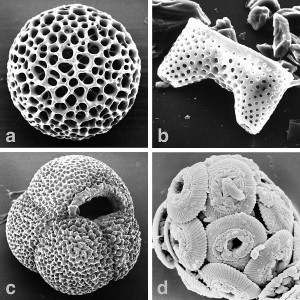As we may already know, the carbon atom is very essential to life on Earth.
We use carbon to fuel our economy and we also eat the carbon we get in form of
sugar from plants. The reservoirs of carbon are where the carbon is stored. Being the fourth most abundant element in universe, carbon is mostly stored in rocks. It can also be found in fossil fuels, ocean, soil, atmosphere and plants.
The carbon cycle is when carbon flows from one reservoir to another in an exchange. In this blog, I will describe the slow carbon cycle, which is the exchange of carbon between the atmosphere, land and ocean.
The slow carbon cycle initiates when atmospheric carbon combines with water to form carbonic acid (H2CO3). This acid falls on rocks and it dissolves them. When the rocks dissolve they form ions such as calcium and these ions flow into the rivers, which leads to the ocean. In the ocean, the calcium ions react with carbonate and produce calcium carbonate, which makes the shells of different organisms. When these organisms die, they sink to the bottom of the ocean where layers of sediment are buried and carbon is stored in limestone.

These are four marine organisms living in the ocean. The micro organisms in c and d have shells that are made of calcium carbonate. When these organisms die, these shells sink to the ground to form limestone. Source: Wikimedia Commons
Then how is the carbon transported from the bottom of the ocean back into the atmosphere? This is done though volcanoes. Volcanoes make the rocks at the bottom of the ocean melt under extreme pressure and heat. When the rocks are heated they combine with silicate minerals and from this process carbon dioxide is formed and released back into the atmosphere.

This is a volcano in the ocean which effectively melts calcium carbonate in the bottom of the ocean and through reactions produces and releases carbon dioxide back into the atmosphere. Source: Wikimedia Commons
I find this process to be very unique. Through the slow carbon cycle, carbon flows through different reservoirs and meets the biological needs of the living organisms in that reservoir. When the organism no longer needs the carbon, the carbon then flows out of the system and into another system where it is more useful.
Naqsh Fatima Bhangu
